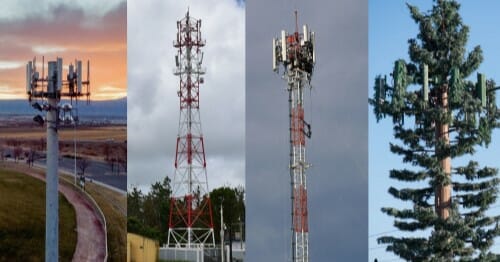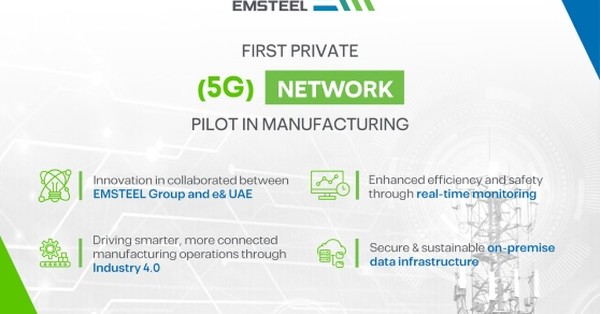The top 3 telco trends for 2023 - Private Networks, Open RAN and Edge Computing. 5G networks are increasingly becoming software driven. To benefit from the power of 5G in making their operations more automated and efficient, many enterprises have started to roll out private 5G networks. Mobile Network Operators ...
Home » 5G Magazine » 5G Magazine – Private Networks Edition » Benefits of private networks for enterprises
Benefits of private networks for enterprises
The top benefits of private networks for enterprise include better network coverage and capacity, deterministic performance, security, and more
Log In or Register to Access This Article
Login
Register
Feature Your Brand in Upcoming Magazines
Showcase your expertise through a sponsored article or executive interview in TeckNexus magazines, reaching enterprise and industry decision-makers.
Related Magazine Content
In this edition of the 5G Magazine, we take a reality check focusing on the actual use cases and applications being deployed across industry verticals, the related ecosystem players, and what value 5G is adding to the corresponding use cases and applications. ...
The potential for private networks is massive, but so are the challenges to realize its full potential. The 5G private networks landscape has a complex, multi-partner ecosystem. Investing in 5G private networks requires working with a provider with a rich partner ecosystem to support complex global deployments. ...
5G presents transformative solutions for municipal operations throughout our nation. The legislative and management leaders within a community rely on insights from data collected directly from operations and other sources to enable mission-critical decisions. This is all made possible by the confluence of 5G, big data analytics, and artificial intelligence. ...
New “private” cellular networks help users and machines to securely access information from more places as industries continue to evolve to improve operations and embrace industry 4.0. ...
5G is transforming markets, industries, and ultimately lives - leveling the playing field for more operators to jump on the 5G innovation speed train will open up more opportunities for everyone. ...
5G Magazine - "Private Networks" edition provides an in-depth view of the current state of the global Private 5G Networks covering ecosystem players' expectations, challenges, strategies, deployments, architecture, and use cases. The featured articles/interview in this edition are from AT&T Business, Amdocs, OnGo/CBRS Alliance, and Capgemini Engineering. Additionally, we cover ...
While the challenges and complexities of deploying and operating a private wireless network can become overwhelming, an evolving ecosystem of equipment suppliers, software providers, and systems integrators makes the task entirely feasible. ...
AT&T delivers a holistic private cellular network strategy, providing solutions using licensed and shared spectrum at the customer premises. Get in-depth details on AT&T's private network offerings and sample use cases ...
Arnab Das, Business head for Capgemini Engineering's Advanced Connectivity CoE, discusses a wide range of topics, including deciding whether 5G networks is the right choice, related use cases, implementation challenges, spectrum choices, network slicing option, and more. ...
From requirements and planning to design and installation strategies — get info on steps for deploying an OnGo-enabled private LTE network in CBRS band. ...
A private network is a dedicated network for an enterprise designed exclusively to meet its specific business needs. The enterprise has full control of the dedicated network. It enables them to restrict network access to authorized people and devices as well as process the enterprise data locally via the edge ...
Top industry verticals based on analysis of 75 5G-based enterprise use cases and spectrum allocated to global enterprises. ...
Deep dive into the global ecosystem players' private network - strategies, partnerships, products, solutions, and sample deployments/trials. We cover 27 ecosystem players, including network equipment vendors, mobile network operators, cloud/edge vendors, enterprises, CBRS spectrum operators, and private network specialists, including neutral hosts and system integrators. Sample ecosystem players we have ...
What are the strategies of network equipment vendors, mobile network operators, cloud/edge vendors, enterprises, CBRS spectrum operators, and private network specialists, including neutral hosts and system integrators? ...

Brand Connect
Amplify Your Brand & Boost Your Business
- Thought-Leadership Management
- Magazine Article
- Executive Interviews
- Whitepapers
- Research Reports
- Custom Research
- Blog Series
- Webinars
- Podcasts
- Advertorials
- Display Ads
- Event Partnership


































